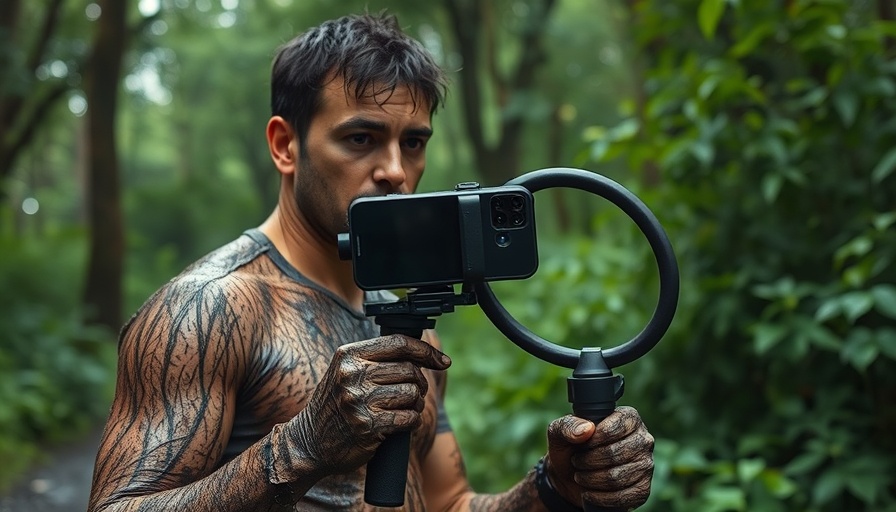
iPhones in Filmmaking: A New Era
In the world of film, innovation often defines the boundaries of creativity. Director Danny Boyle's choice to shoot his highly anticipated sequel, “28 Years Later,” primarily using iPhones has opened new dialogues about the potential of mobile technology in professional filmmaking. Known for his landmark film “28 Days Later,” which was shot on Canon digital cameras, Boyle’s pivot to iPhone technology brings both nostalgia and modernity to the horror genre. By leveraging an array of 20 iPhone Pro Max cameras mounted on a custom rig, he effectively creates a unique cinematic technique that he likened to “poor man’s bullet time.” This signifies a shift not just in tools but in how stories are told on screen.
Breaking Down the Mobile Filmmaking Process
Boyle’s technique involved using iPhones not merely as supplementary or secondary equipment but as principal cameras, enhancing the dynamism and flexibility of shooting. The process was meticulously crafted, with Boyle disabling features like automatic focus and integrating special accessories. This hands-on approach facilitated filming in remote Yorkshire locations, which he describes as reminiscent of “1,000 years ago.” In these serene, untouched landscapes, the lightweight nature of iPhones allowed the crew to remain unobtrusive, capturing raw emotions and actions in a Seinfeld-like veracity.
The Significance of Technology in Modern Storytelling
Boyle’s strategic use of technology underscores a compelling narrative about the democratization of filmmaking. Today, aspiring filmmakers can access powerful tools previously exclusive to industry giants. The iPhone's advanced camera capabilities exemplify how mobile technology empowers creatives around the globe. This shift is not just a trend but a critical evolution in how stories can be visualized and shared. Boyle's work thus becomes a beacon for emerging filmmakers who want to explore new avenues using resources that are accessible to them.
Comparative Innovations in Filmmaking
Historically, the evolution from film to digital marked a significant turning point for cinema. From handheld camcorders to high-definition digital equipment, filmmakers continually explore new technologies. Just as George Lucas utilized CGI to create a new visual language for “Star Wars,” Boyle’s reliance on smartphones adds a layer of familiarity that resonates with the contemporary audience. By leveraging technology that is part of daily life, Boyle allows viewers to connect more deeply with the narrative. Other filmmakers, such as Steven Soderbergh, have also experimented with mobile phones for shooting, showcasing the potential of low-cost filmmaking.
Forecasting the Future of Mobile Technology in Cinema
As technology continues to advance, the significance of mobile devices in film is likely to grow. Future trends may include enhanced camera quality, improved stabilization features, and even more powerful editing tools directly on smartphones. Moreover, as society shifts towards embracing more personal, experiential reflections in art, filmmakers will increasingly seek out innovative methodologies like those exhibited by Boyle. This film could serve as a catalyst, inspiring others to explore both the artistic and technical realms of storytelling through mobile technology.
Conclusion: The Power of iPhones in Storytelling
In “28 Years Later,” Danny Boyle not only revives a beloved narrative but also showcases the breathtaking evolution of technology in film, encouraging a new generation of filmmakers to utilize what’s at their disposal—an iPhone, in this instance—to capture unique stories. Boyle’s approach exemplifies how modern technology reshapes artistic expression, making it both a timely and timeless story amid the advancements in filmmaking. This development marks an exciting chapter for cinema, blurring the lines between professional and consumer-grade equipment.
 Add Row
Add Row  Add
Add 



Write A Comment